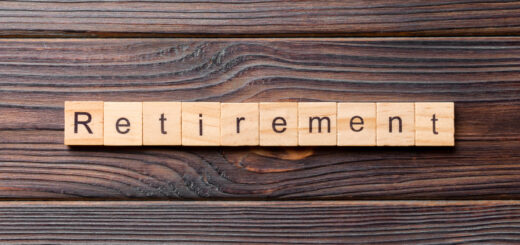Types of Retirement Accounts Explained

Retirement accounts are specialized savings accounts designed to help individuals set aside funds for their retirement years. These accounts offer tax advantages and various investment options that allow the funds to grow over time. There are several types of retirement accounts available in the United States, each with its own features and benefits. Let’s explore some of the most common types of retirement accounts.
401(k) Plan
A 401(k) plan is a type of employer-sponsored retirement account offered by companies to their employees. It allows employees to contribute a portion of their pre-tax salary into the account, up to a certain limit set by the Internal Revenue Service (IRS). The contributions grow tax-deferred, meaning you won’t pay taxes on the contributions or earnings until you withdraw the funds during retirement. Many employers also offer matching contributions, where they match a percentage of the employee’s contribution, which can significantly boost the savings.
Traditional IRA
A Traditional IRA (Individual Retirement Account) is a personal retirement account that allows individuals to make tax-deductible contributions, up to a certain limit set by the IRS, depending on their income and filing status. The contributions grow tax-deferred, and the withdrawals during retirement are taxed as ordinary income. Traditional IRAs are popular for individuals who do not have access to an employer-sponsored retirement plan or for those who want to save additional funds outside of their employer-sponsored plan.
Roth IRA
A Roth IRA is similar to a Traditional IRA in that it is a personal retirement account. However, the main difference is that contributions to a Roth IRA are made with after-tax dollars, meaning you do not get a tax deduction for your contributions. However, the withdrawals during retirement are tax-free, including the earnings on the contributions, as long as you meet certain criteria. Roth IRAs are popular for individuals who expect to be in a higher tax bracket during retirement or who want to diversify their tax treatment of retirement savings.
SEP IRA
A Simplified Employee Pension (SEP) IRA is a retirement plan for self-employed individuals or small business owners. It allows employers to make tax-deductible contributions on behalf of their employees, including themselves. The contribution limit is higher compared to Traditional and Roth IRAs, and it is based on a percentage of the employee’s income. SEP IRAs are popular for self-employed individuals or small business owners who want a simple and cost-effective retirement plan with flexibility in contribution amounts.
SIMPLE IRA
A Savings Incentive Match Plan for Employees (SIMPLE) IRA is another type of retirement plan for small businesses. It is similar to a 401(k) plan in that it allows both employers and employees to make contributions. However, it has lower contribution limits compared to a 401(k) plan, making it more accessible for small businesses. Employers can choose to either match their employees’ contributions or make a fixed percentage contribution, and employees can also make their own contributions. SIMPLE IRAs are popular for small businesses that want to offer retirement benefits to their employees with lower administrative costs.
457(b) Plan
A 457(b) plan is a type of retirement plan offered by state and local governments, as well as some nonprofit organizations. It is similar to a 401(k) plan, but it has some unique features. One of the main differences is that it allows employees to make contributions even if they are already contributing to another retirement plan, such as a 401(k) or IRA. Additionally, employees who are within three years of their normal retirement age can make “catch-up” contributions, allowing them to save more as they approach retirement.
Thrift Savings
Plan (TSP): The Thrift Savings Plan is a retirement plan for federal government employees, including military personnel. It is similar to a 401(k) plan and offers several investment options for employees to choose from. Employees can make pre-tax or Roth contributions, and the plan also offers matching contributions for certain employees. One unique feature of the TSP is its low fees, which makes it a cost-effective retirement savings option for federal employees.
Defined Benefit Plan
A defined benefit plan, also known as a traditional pension plan, is a retirement plan offered by some employers. Unlike the previously mentioned plans, which are defined contribution plans, a defined benefit plan promises a specific amount of retirement income to employees based on a formula that takes into account factors such as salary history and years of service. The employer bears the investment risk and is responsible for providing the promised retirement benefits to employees. Defined benefit plans are less common today compared to defined contribution plans, but they are still offered by some larger employers and government entities.
Health Savings Account (HSA)
While not exclusively a retirement account, a Health Savings Account (HSA) can also be used as a retirement savings vehicle for individuals who have a high-deductible health insurance plan. An HSA allows individuals to save pre-tax or tax-deductible contributions, and the funds can be invested and grow tax-free. Withdrawals used for qualified medical expenses are tax-free, and after age 65, withdrawals for non-medical expenses are subject to ordinary income tax, similar to a Traditional IRA. HSAs can be a valuable tool for saving for healthcare expenses in retirement.
In conclusion, there are various types of retirement accounts available, each with its own features and benefits. 401(k) plans, Traditional IRAs, and Roth IRAs are some of the most common retirement accounts for individuals, while SEP IRAs, SIMPLE IRAs, 457(b) plans, and the Thrift Savings Plan are options for small business owners, government employees, and military personnel. Defined benefit plans are less common but still offered by some employers, and HSAs can also be used as a retirement savings vehicle for those with high-deductible health insurance plans. It’s important to understand the specific rules, contribution limits, and tax implications of each type of retirement account to make informed decisions based on your individual financial situation and retirement goals. Consulting with a financial advisor or tax professional can also be beneficial in determining the most suitable retirement account for your needs. Planning for retirement early and taking advantage of the tax benefits and investment opportunities offered by retirement accounts can play a crucial role in securing a financially comfortable retirement.

-1.gif)

